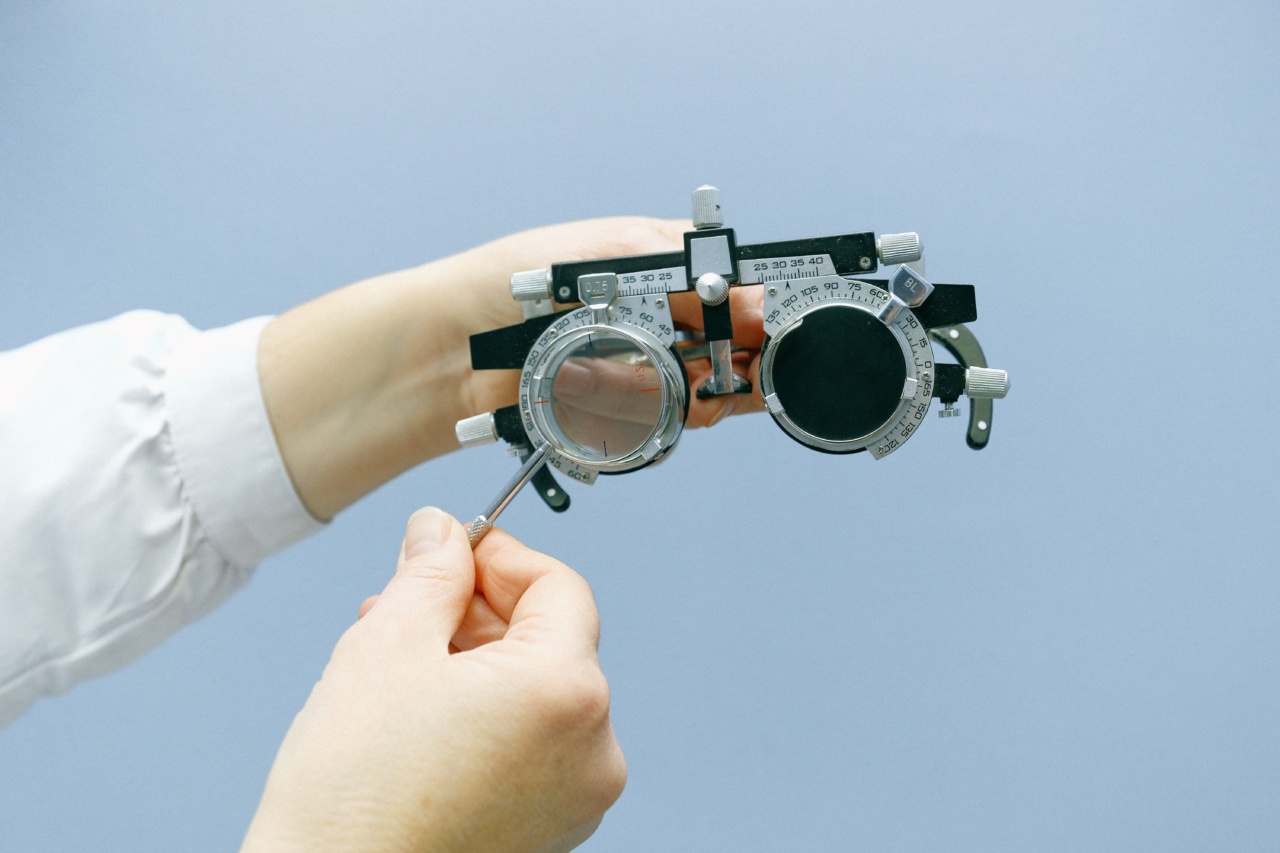Eye pressure, also known as intraocular pressure (IOP), is the measure of the fluid pressure inside the eye. This pressure is created by the constant production and drainage of fluid (aqueous humor) within the eye.
Too much pressure, or high eye pressure, can cause damage to the optic nerve and lead to vision loss. On the other hand, low eye pressure can also cause vision problems. Understanding the causes and normal ranges of eye pressure is essential for maintaining good eye health.
Causes of High Eye Pressure
The primary cause of high eye pressure is an imbalance between the production and drainage of aqueous humor. This can occur due to various factors, including:.
Glaucoma
Glaucoma is a group of eye diseases that are characterized by damage to the optic nerve, usually as a result of high eye pressure. There are two main types of glaucoma: open-angle and angle-closure.
Open-angle glaucoma is the most common type and usually occurs gradually over time. Angle-closure glaucoma, on the other hand, is less common but can develop suddenly and requires immediate medical attention.
Age
As we age, the drainage system in the eye can become less effective, leading to an increase in eye pressure. This is one of the reasons why older adults are at a higher risk of developing glaucoma.
Ethnicity
Studies have shown that individuals of African descent are at a higher risk of developing glaucoma compared to individuals of European descent. The reasons for this are not yet fully understood.
Family History
If you have a family history of glaucoma, you are at a higher risk of developing the condition yourself. This is because certain genetic mutations may increase the likelihood of developing high eye pressure and glaucoma.
Normal Eye Pressure Ranges
The normal range for eye pressure is between 10 and 21 mmHg (millimeters of mercury). However, this range may vary slightly depending on factors such as age, ethnicity, and overall health.
For example, older adults may have slightly higher eye pressure readings than younger adults.
It is important to note that having an eye pressure reading outside of the normal range does not necessarily mean that you have glaucoma.
Other factors, such as the thickness of your cornea and the health of your optic nerve, should also be taken into consideration when evaluating your overall eye health.
Measuring Eye Pressure
Evaluating eye pressure is a routine part of a comprehensive eye exam. Eye pressure can be measured using a tonometer, which is a small instrument that uses a puff of air or a small probe to measure the pressure inside the eye.
This process is quick, painless, and non-invasive.
Your eye doctor may also check your eye pressure during a dilated eye exam, which involves using eye drops to widen your pupils so that the doctor can get a better look at the inside of your eye.
Managing High Eye Pressure
If you have high eye pressure, your eye doctor may recommend various treatments to help manage your condition and prevent further damage to your optic nerve. These may include:.
Eye Drops
Medicated eye drops can be used to help reduce eye pressure by increasing the drainage of aqueous humor or decreasing its production.
Oral Medications
In some cases, oral medications may be prescribed to lower eye pressure. These medications work by reducing the amount of fluid in the eye or by improving its drainage.
Laser Surgery
Laser surgery can be used to create small openings in the eye’s drainage system, helping to improve the drainage of fluid and reduce eye pressure. This procedure is usually done on an outpatient basis and has a quick recovery time.
Trabeculectomy
Trabeculectomy is a surgical procedure that involves creating a new drainage pathway in the eye. This procedure is usually reserved for more severe cases of glaucoma that have not responded to other treatments.
Conclusion
Eye pressure is an important aspect of overall eye health and can be an indicator of conditions such as glaucoma. Understanding the causes and normal ranges of eye pressure is essential for maintaining good eye health and preventing vision loss.
If you have concerns about your eye pressure, be sure to discuss them with your eye doctor.





























